(913) 232-8016
Kansas City
(816) 293-2727
St. Joseph
Kansas City
St. Joseph

Yellowjacket Identification & Behavior
Bee-sized wasps with black-and-yellow stripes; not hairy and don’t collect pollen
Build enclosed paper nests, usually underground
Nest & Activity
Nests have a single visible entrance with wasps flying in and out
Frequent sightings often indicate a nest nearby
Treatment Process
Dust is applied deep into the entrance; aggressive activity is expected
Follow-Up
Follow-up visit within 1–3 days; retreatment is common
Nests are not removed due to safety risks
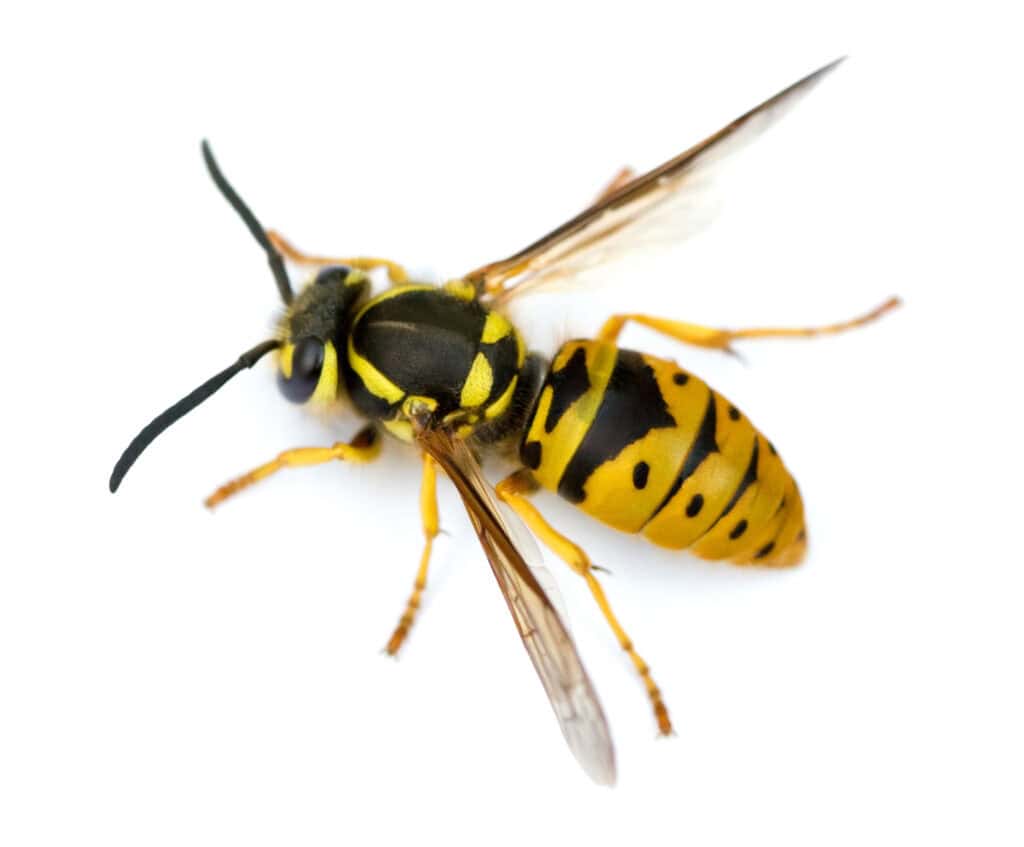
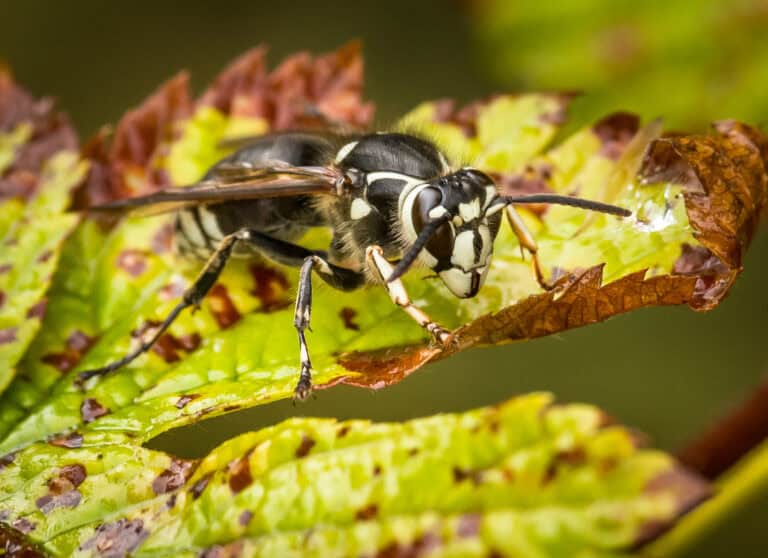
Bald-Faced Hornet Identification & Behavior
Large, aggressive wasps with black-and-white coloring and a painful sting
Build paper nests from chewed wood pulp, often under eaves, in trees, or dense shrubs
Nests can house hundreds of hornets by late summer, making them dangerous to approach
Treatment Process
Technician applies a specialized dust directly into the nest’s entry hole
Dust treatment effectively eliminates hornets inside the nest
Follow-Up & Nest Removal
Nest is not removed the same day due to hornet aggression
A follow-up visit occurs 1–3 days later to confirm inactivity
Once safe, the nest is removed and sealed in a secure bag
Small nest remnants may remain; homeowners can power wash or gently remove them
Nests above two stories or in hazardous locations may not be removed but will still be fully treated
Safety Reminder
Never approach or attempt to remove an active hornet nest—contact Pete’s Pest Control for professional service.
Paper Wasp Identification & Behavior
Nests are tan, papery, open honeycomb structures hanging from a single stalk
Wasps are black or brown with yellow or reddish markings
Build nests using wood fibers from fences, benches, and other untreated wood
Treatment Process
Visible, reachable nests are treated directly with dust, aerosol, or liquid products
Applications are done from a safe distance using professional equipment
Care is taken to avoid over-spraying products to prevent drips or stains
Interior Wasp Control
For wasps in wall voids, attics, or vents, dust treatments are applied to entry points
Nest Removal
After treatment and once the nest is inactive, the technician will remove it
Nest is disposed of properly to prevent relocation or rebuilding
Treating the nest before removal ensures the colony is eliminated and reduces future infestations
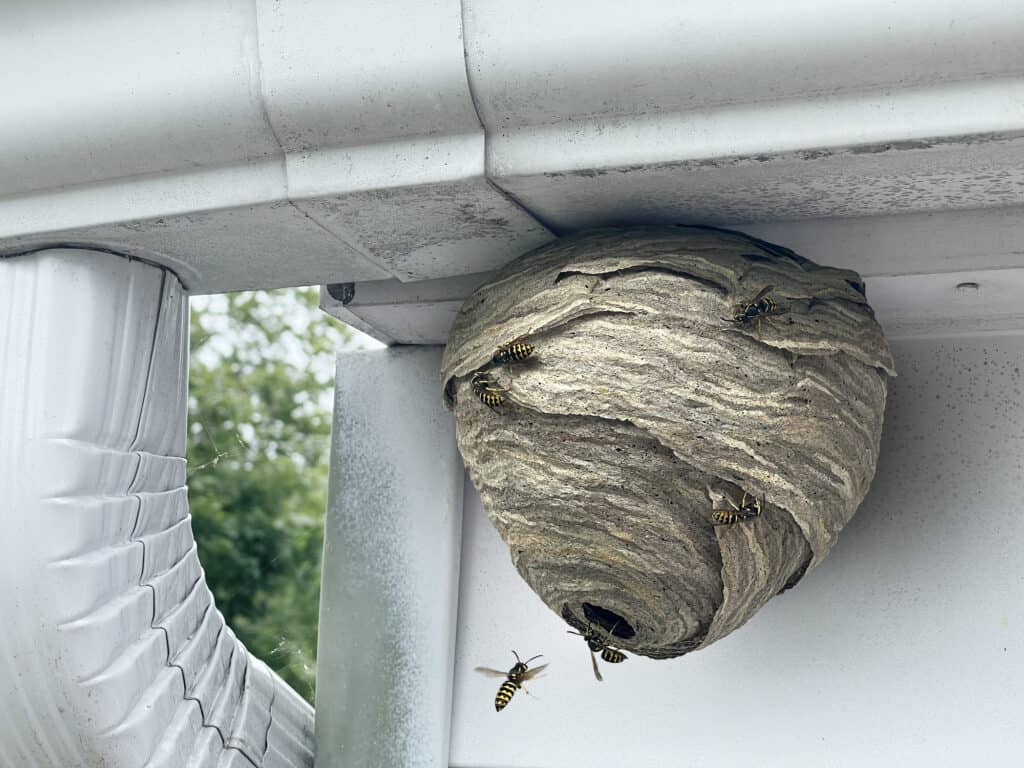
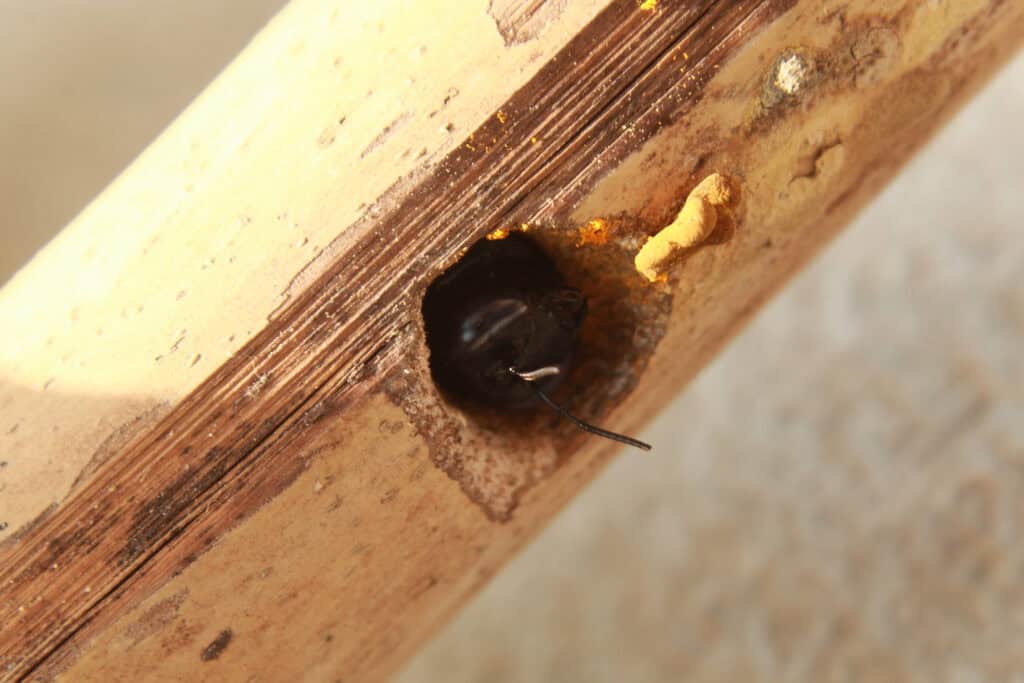
Carpenter Bee Identification & Behavior
Resemble bumblebees but have a smooth, shiny black abdomen
Drill round ¼–⅜ inch holes in wood and leave sawdust beneath entry points
Commonly found under decks, railings, eaves, fences, and playsets
Treatment Process
Dust is applied directly into each entrance hole to eliminate active bees
Helps prevent re-infestation in targeted wooden areas
Hole Management
Holes are not plugged immediately
Once activity stops, sealing prevents moisture damage and stops future bee use
Plugging depends on accessibility, number of holes, and approval of materials
Additional Notes
Carpenter bees are classified as Wood Destroying Insects (WDI)
A treatment diagram is required for real estate–related services
Contact Pete’s Pest Control if you notice round holes or hovering bees around wooden structures
Honeybee Identification & Behavior
Worker bees are ½–⅝ inch long; and queens are larger
Brown with golden hair and black abdominal stripes
Worker bees have barbed stingers and die after stinging
Commonly seen foraging on flowers for pollen and nectar
Nests are typically found in tree cavities, wall voids, attics, or beekeeper hives—not in the ground
Colony Management
Honeybee treatment is handled differently due to their importance to the environment
A beekeeper must first attempt to remove the colony
If removal is not possible, management approval is required before any treatment
Treatment is only considered when the colony is a threat and located inside a structure
Direct treatment is a last resort and may cause property damage, so preservation is prioritized
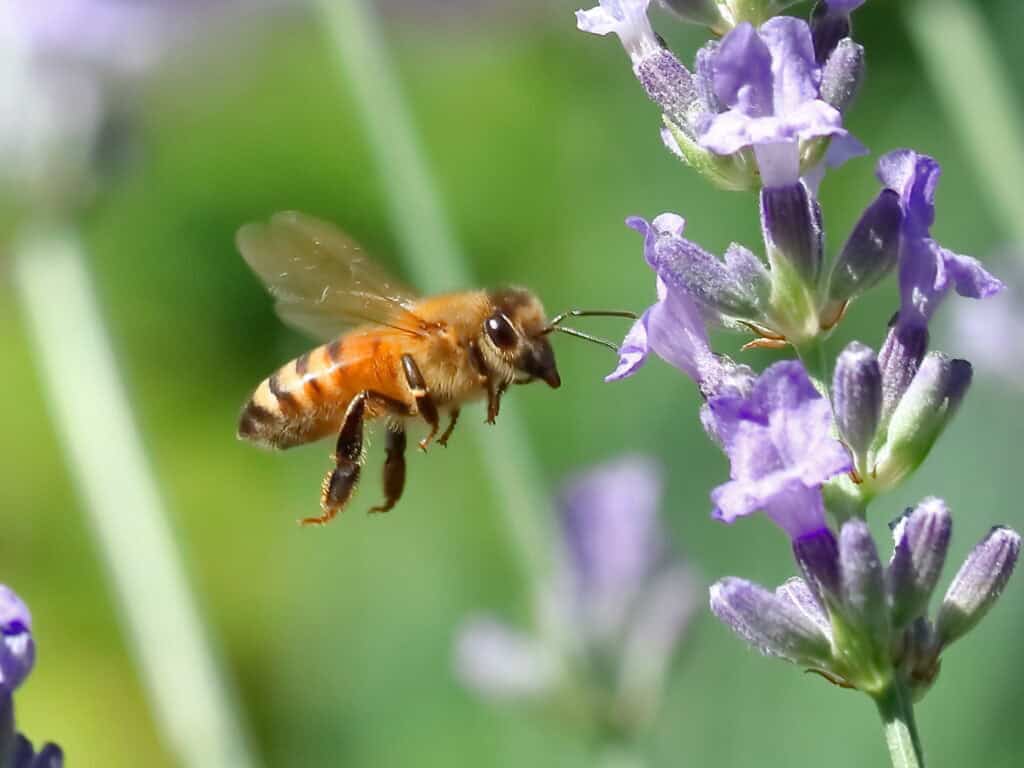
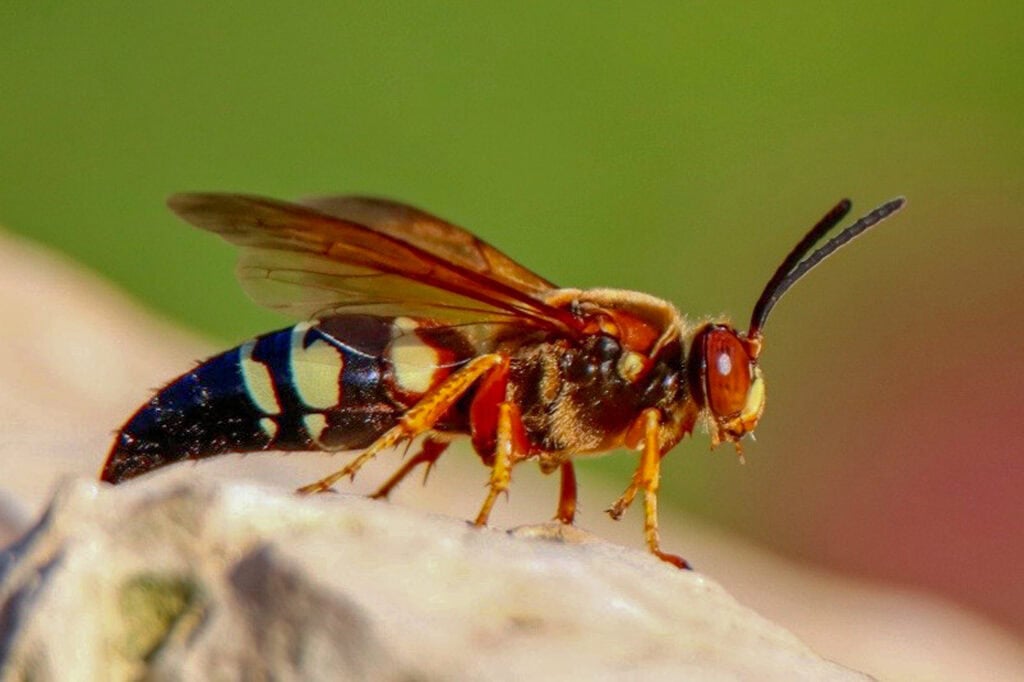
Identification & Behavior
One of the largest wasps in Kansas and Missouri, often over 1½ inches long
Males hover to guard territory and may fly close but are not aggressive
Females dig tunnels in loose or sandy soil and use their sting only to paralyze cicadas for their larvae
Nesting Signs
Found in lawns, garden beds, and pastures
Small mounds of loose soil with round holes or shallow trenches indicate activity
Treatment Process
Technicians locate and treat as many active tunnels as possible
Dust is applied directly into each nest entrance
Treatment eliminates active nests but cannot prevent new cicada-killers from returning to the area
Service Notes
Only active nesting sites can be controlled; wasps foraging or nesting elsewhere cannot be fully prevented
New tunnels can be treated as they appear for ongoing management
Identification & Behavior
Large, fuzzy bees with black and yellow (sometimes orange) banded coloring
Easily distinguished from carpenter bees by their fuzzy abdomen
Commonly seen foraging on flowers for nectar and pollen
Important pollinators; some plants rely heavily on them
Can sting if provoked but are generally not aggressive
Nesting Habits
Typically nest underground in old rodent burrows
May also nest in brush piles, trash heaps, or birdhouses
Prefer shaded, sheltered areas away from direct sunlight
Treatment Notes
Treatment is generally avoided due to their pollinator benefits
Bumblebees are not aggressive unless their nest is disturbed
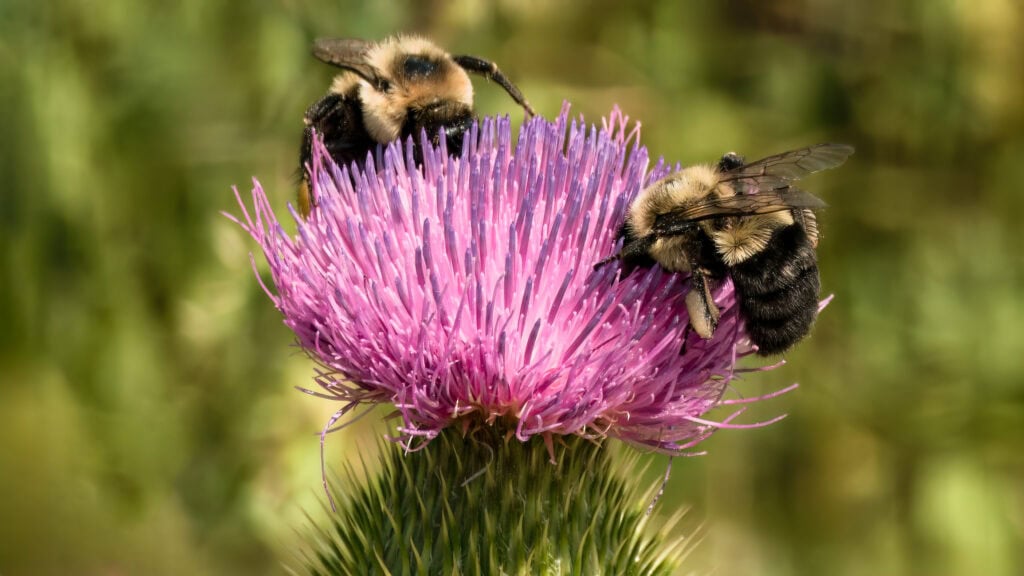
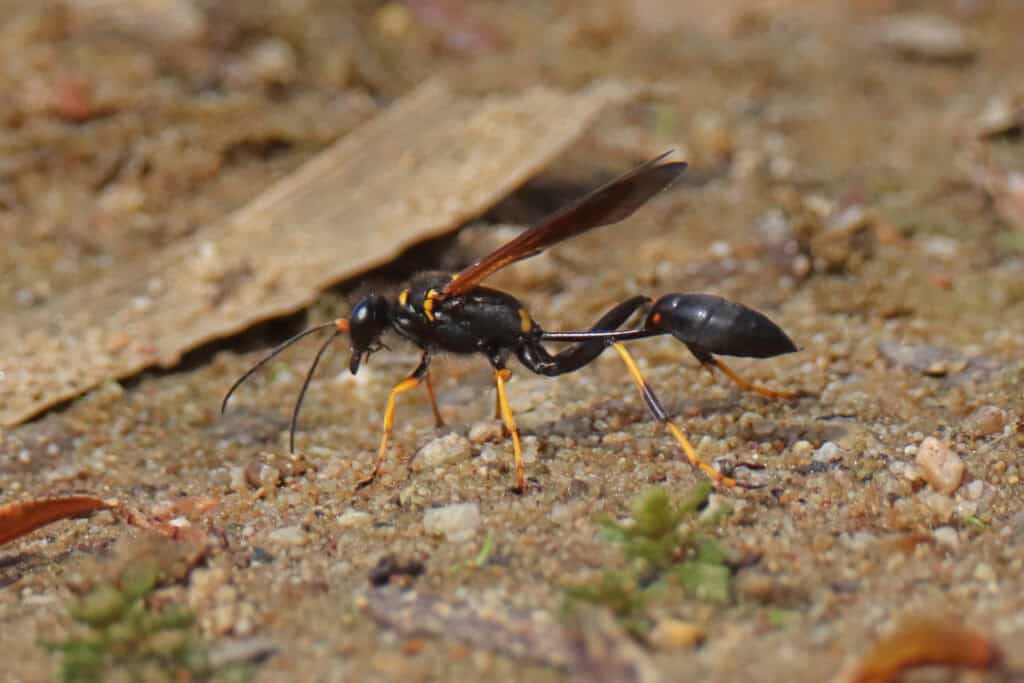
Identification & Behavior
Wasps with narrow, threadlike waists; colors vary by species (black and yellow, black with blue wings, metallic blue)
Solitary wasps that build nests out of mud
Nests can be identified by structure and location
Rarely aggressive; found on exterior surfaces or inside voids like eaves, behind siding, and attics
Treatment Process
Remove accessible nests
Spot treat the area with a residual liquid insecticide


© 2025 Pete’s Pest Control—All rights reserved—Privacy Policy —Product Labels and SDS